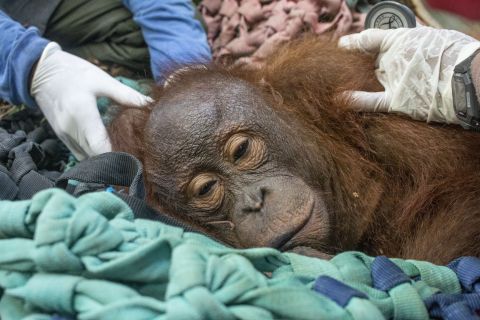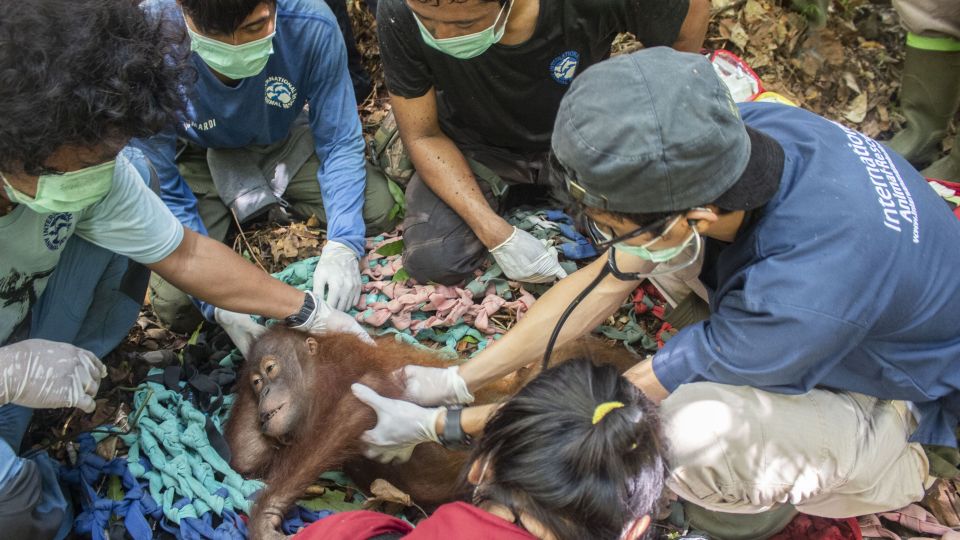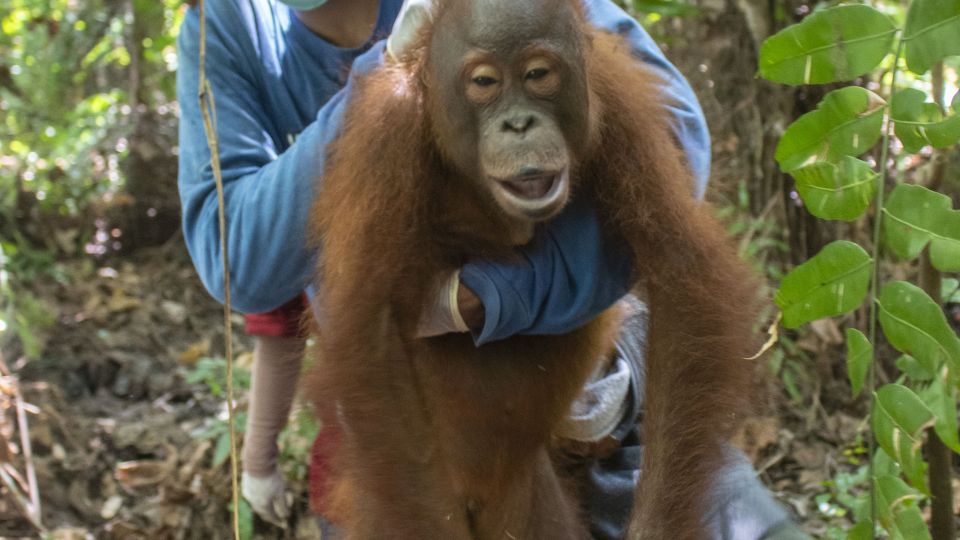
We have saved the life of a young orangutan in West Borneo that was trapped in a fragmented area of land surrounded by roads and community housing.
The rescue operation was carried out after residents from Riam Berasap Village in North Kayong Regency reported the presence of orangutans in their fields in April.
After receiving the villagers’ reports, we liaised with the Natural Resources Conservation Centre (BKSDA) before visiting the location and confirming that an orangutan was eating the villagers’ sugar cane.
A team was set up to evacuate the orangutan from the villagers’ farmland and return him to his natural habitat. The rescue team was made up of members of the BKSDA, representatives from Gunung Palung National Park (BTNGP) and one of our rescue units in Indonesia. The team set off for the village at 6am on 8 May to remove the orangutan before he came into conflict with local people.
The young male, estimated to be about four years old, was later named Riam by his rescuers.

Our medical team carefully measured the dose of anaesthetic to be used in the dart gun by marksman Argitoe. Once the dart had hit him, Riam was soon unconscious and caught safely by the team as he fell from the tree. The vets then gave him a quick check up to assess his condition.
According to our vet Dr Temia, the orangutan appeared to be healthy. “The condition of this orangutan looks good,” he said, “but we need to do further tests, particularly as he is still very young.”
The team transported Riam to our Orangutan Conservation Centre in Ketapang for observation and further tests.
Problems relating to forests and land are the main reason why orangutans enter people’s gardens and farmland. Fires in 2015 burned most of the forest in this region, forcing orangutans out of their natural habitat in search of food. The transformation of forests into fields and gardens has contributed to the increasing number of orangutans ending up there.
The Head of West Kalimantan BKSDA, Sadtata Noor, said: “Yet again the West Kalimantan BKSDA, BTNGP and IAR Indonesia have succeeded in saving an orangutan’s life. However, the successful rescue of orangutans does not completely solve the problem. There is still a large amount of work that we must all carry out together to achieve a comprehensive and sustainable resolution. Wildlife and human conflicts are increasing as time goes on. We need to continue discussions and open the minds and hearts of all stakeholders. Let’s finish this work for the sake of animal conservation, ecosystem health and human welfare.”

The Head of the BTNGP, Ari M. Wibawanto, added: “The orangutan conflict that occurred around the area of the National Park was largely caused by habitat fragmentation due to forest fires. Since 2018 we have taken in three individual wild orangutans translocated into our area in accordance with the process and the protocols we have drawn up together. Our shared challenge for the future is how we can provide new habitat for orangutans.
It is expected that all parties, the Government, NGOs and commercial companies, can strive to create a habitat that is connected, not fragmented, so that the orangutans can survive.
Karmele L Sanchez, Director of IAR Indonesia, said: “Hundreds of orangutans have been rescued by West Kalimantan’s BKSDA, the Gunung Palung National Park and IAR Indonesia during the past 10 years. We are very grateful to the local community for reporting the presence of this orangutan to us so that he too could be saved and not cause a problem again.
However, the next step must be for all stakeholders - individuals, the Government and the private sector - to make a sustained strategy so that orangutans and people can live peacefully in the same habitat.”

